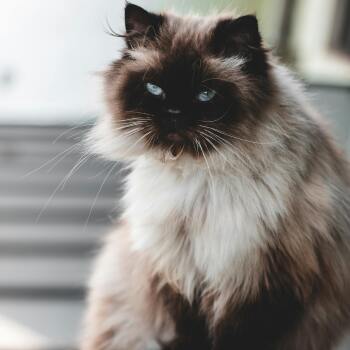Himalayans

Graceful, affectionate, and oh-so-huggable.
With their gentle temperament and striking appearance, Himalayan cats bring a calm yet charismatic energy into any home. Whether you’re already the proud companion of a “Himmy” or just curious about the breed, one thing’s for sure: these cats have a way of capturing hearts from the very first purr.
What Makes Himalayans So Special?
Himalayans are the perfect blend of cuddly companion and low-key comedian. They’re sweet-natured, love to lounge, and genuinely enjoy being around people—whether it’s curling up beside you on the couch or gently following you from room to room. Their mellow personality makes them an ideal fit for quieter homes or families who appreciate a more relaxed feline friend.
These cats are known for forming strong bonds with their humans. They’re loyal without being clingy, and affectionate without demanding constant attention. They also tend to get along well with children and other pets, making them a great addition to multi-pet households.
Things to Know Before You Bring One Home
While Himalayans are calm and affectionate, they do come with a few care requirements. Their thick, luxurious coats need regular grooming to prevent matting, and they’re typically best kept indoors due to their heat sensitivity and flatter facial structure. If you’re looking for a low-maintenance cat, this may not be your match—but if you're up for brushing and bonding, they’ll reward you with unconditional love.
A Glimpse Into Their Origins
The Himalayan cat is a mix of beauty and careful breeding. Originally developed by combining the Persian’s long coat with the Siamese’s color-point pattern and blue eyes, the breed was created to offer the best of both worlds. The result? A soft-spoken, strikingly beautiful companion with a big heart and a mellow soul.
Common Health Considerations for Himalayans
- Feline Lower Urinary Tract Disease (FLUTD)– Himalayans can be prone to urinary issues like infections or crystals, which may show up as straining in the litter box or urinating outside of it. It’s important to call your vet right away if you notice any signs—especially in males, where blockages can become serious fast.
- Polycystic Kidney Disease (PKD)–This inherited condition causes cysts to form in the kidneys and can lead to reduced kidney function over time. Regular screenings and routine bloodwork can help catch early signs, and a specialized diet may help manage the condition.
- Portosystemic Shunt– A rare but serious condition where blood bypasses the liver, preventing proper detoxification. Symptoms like poor growth, confusion, or sensitivity to medications can be red flags. Diagnostic testing and surgery may be necessary to correct the issue.
- Hyperthyroidism– In older cats, this common endocrine disorder can lead to symptoms like weight loss, increased appetite, and hyperactivity. It’s treatable with medication, dietary changes, or other therapies depending on severity.
- Respiratory Challenges– Due to their shortened nasal passages (a trait inherited from their Persian side), Himalayans may struggle with chronic congestion or noisy breathing. In some cases, surgery can help improve airflow and comfort.
- Feline Asthma– Some Himalayans are more sensitive to airborne allergens and may experience wheezing, coughing, or labored breathing. Inhaled medications or steroids can often control symptoms when diagnosed early.
- Cutaneous Asthenia– This rare skin condition can cause the skin to stretch or tear easily due to faulty collagen. Affected cats require special care to protect their skin and should not be bred.
- Peritoneopericardial Diaphragmatic Hernia (PPDH)– A congenital condition where abdominal organs move into the chest cavity due to a developmental defect. Symptoms may include vomiting, lethargy, or breathing difficulties, and surgical correction is usually necessary.
- Neonatal Isoerythrolysis (NI)– If you’re considering breeding, this condition is important to understand. It occurs when kittens with a different blood type than their mother ingest antibodies from her colostrum, which can destroy their red blood cells. Knowing the blood types of both parents is critical to prevention.
Thinking of welcoming a Himalayan into your home?
You’re not just adopting a cat—you’re gaining a quiet, loving presence that brings peace and warmth into your world. From their striking appearance to their kind-hearted nature, Himalayans are the definition of gentle companionship.
Ready to Learn More? We’re Here to Help!


